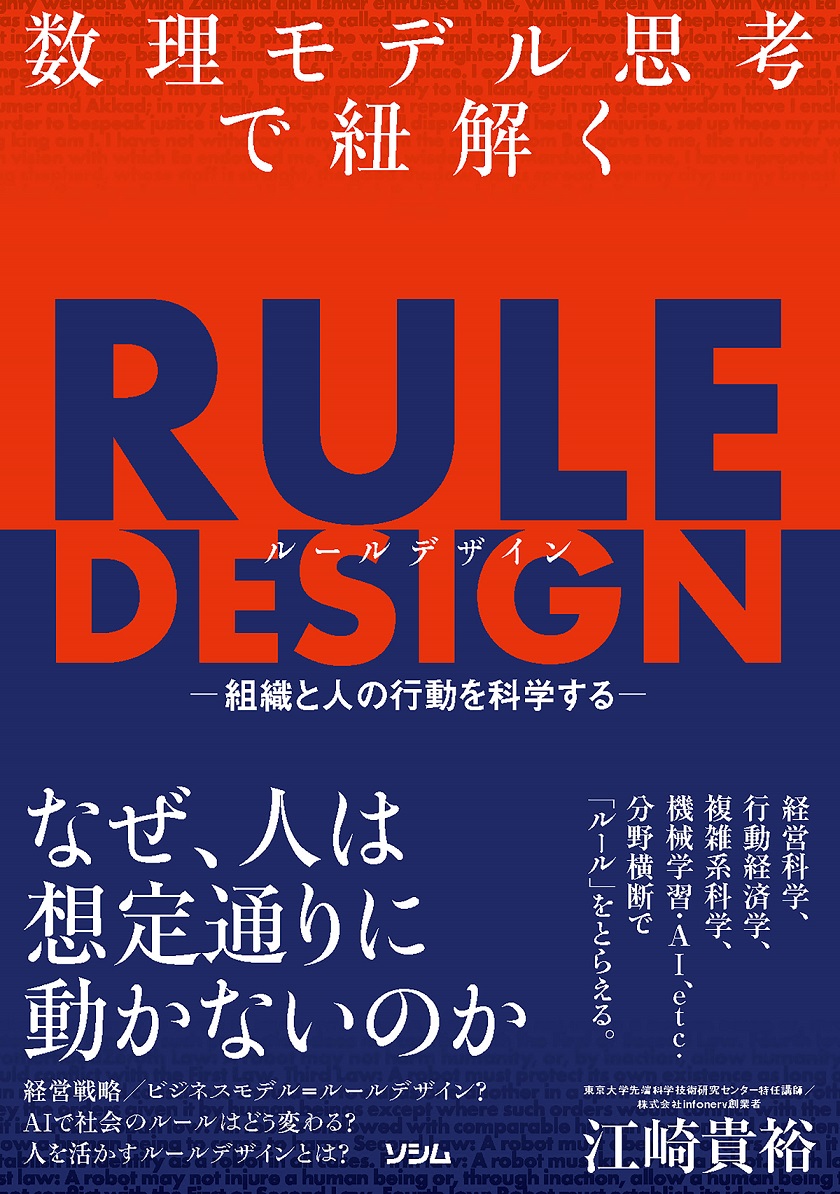
Title
Suuri Model Shikou de Himotoku RULE DESIGN (RULE DESIGN through Mathematical Model Thinking - The Science of Organizational and Human Behavior)
Size
360 pages, A5 format
Language
Japanese
Released
November 17, 2022
ISBN
978-4-8026-1386-6
Published by
Socym Co,.Ltd.
Book Info
See Book Availability at Library
Japanese Page
This book provides an in-depth examination of the concept of "rules," a term that permeates various aspects of our lives, from legal systems and governance to school regulations, workplace guidelines, and even household norms. These rules are designed to make life smoother and help groups and societies achieve their collective goals. Yet, unfortunately, they often fail to function as intended. Such shortcomings may lead many to question, "Why must I follow these seemingly irrational rules?"
Understanding or controlling even a single person's behavior is no easy task, let alone designing rules for a group. This task, which we refer to as "rule design," is not just complicated but a nuanced and multifaceted endeavor. Despite its centrality in our daily lives, the principles of rule design are rarely taught or even acknowledged. Many might not even see the need, as humans tend to believe they can easily understand and control others. This notion is often proven wrong by the consistent failure of rules around us. When forming rules, the assumption that "people will surely act this way" can be seen as a form of "modeling." However, these models are frequently oversimplified, leading to unforeseen outcomes and inefficiencies. This book unravels these issues through an approach termed "mathematical model thinking."
What happens when rules fail? This book provides an illuminating look into this question by collecting and categorizing numerous examples of rule failure. These range from the broad and impactful, such as government and local policies, to the more personal and immediate, such as team management and parenting mishaps. These instances are methodically divided into four distinct levels: inherent problems within the rules themselves, individual psychological factors, group mechanisms that arise when people gather, and environmental factors influenced by external forces. Using this framework, readers will be guided to explore the mechanisms of rule failure, referencing the knowledge and insights from various fields including psychology, economics, complex system science, and more.
In the latter part of the book, the focus shifts to the positive, discussing how to make rules work effectively within human society. This includes not only an exploration of the beneficial aspects of setting rules but also a forward-thinking analysis of new rule designs made possible by recent technological advancements. Particularly intriguing is the examination of the complex issue of "what happens in a social system where AI agents mingle with humans, and how it must be controlled." As technology advances, this subject will likely become a significant concern and area of study.
In summary, this book offers a cross-disciplinary look at the functional aspects of "rules" that shape organizations, communities, and human society at large. It introduces "rule design" as a new approach, aimed at creating better, more responsive systems, including the challenges and opportunities brought by AI's integration into human interaction. By thoughtfully examining how rules can be understood, categorized, and effectively implemented, it presents a comprehensive framework for the structures governing our daily lives. It serves as a valuable resource for both the academic and business communities, bridging theory and practice in a manner that is both engaging and informative.
(Written by EZAKI Takahiro, Project Lecturer, Research Center for Advanced Science and Technology / 2023)



 Find a book
Find a book




